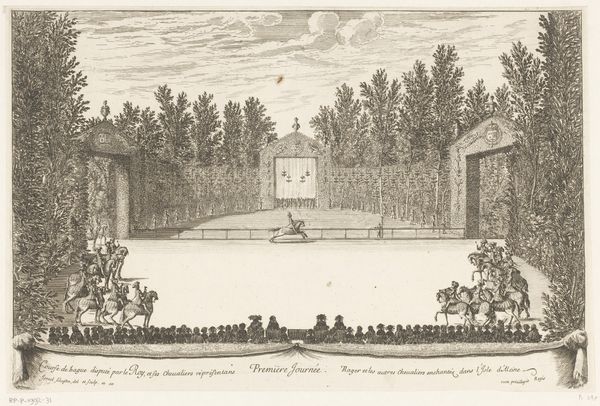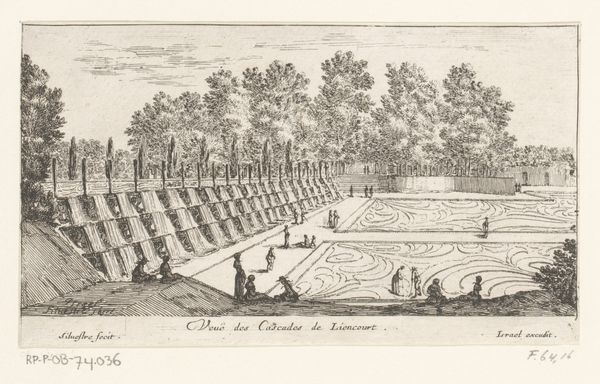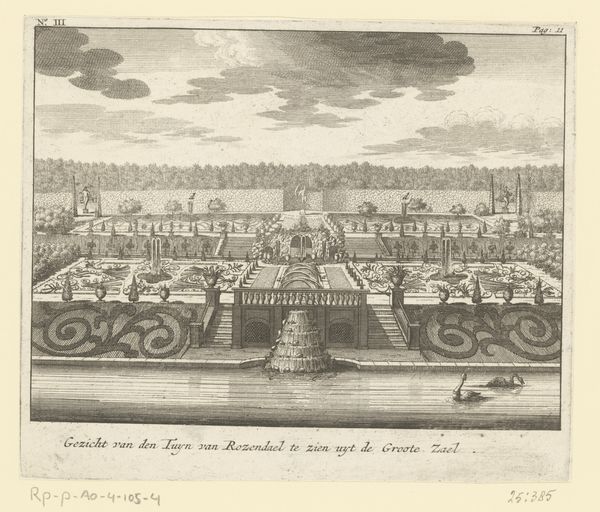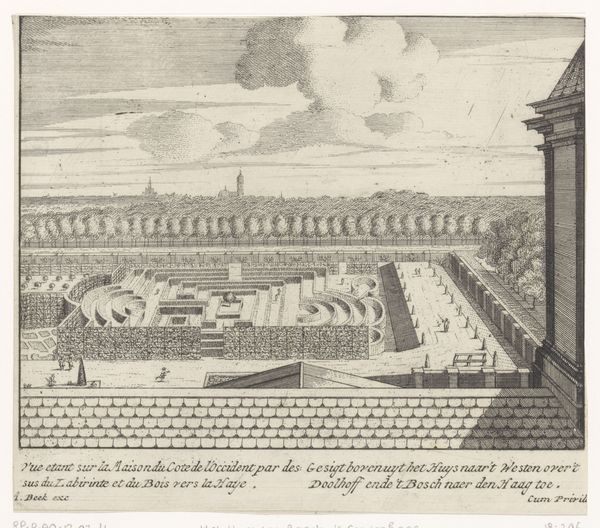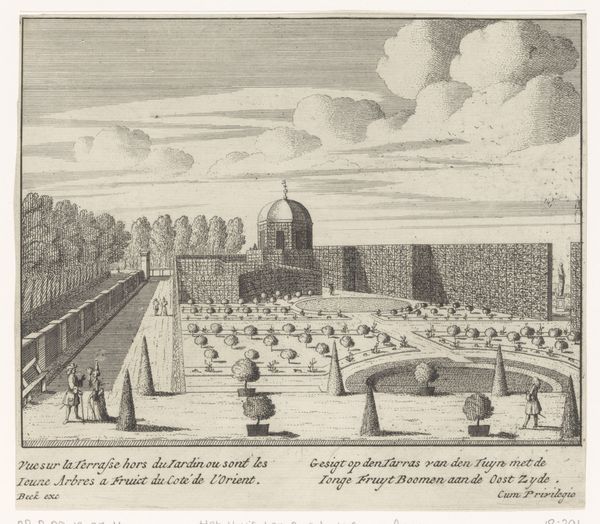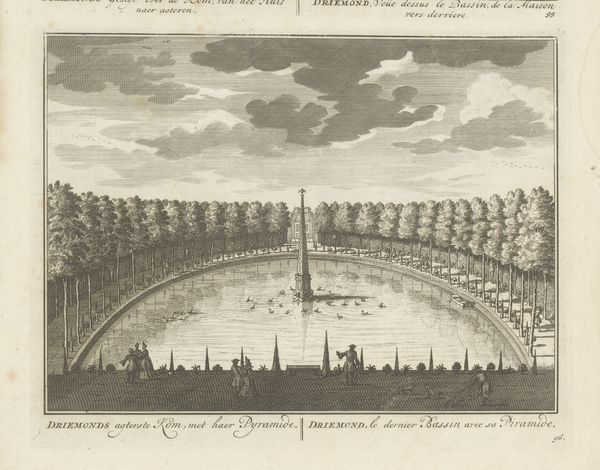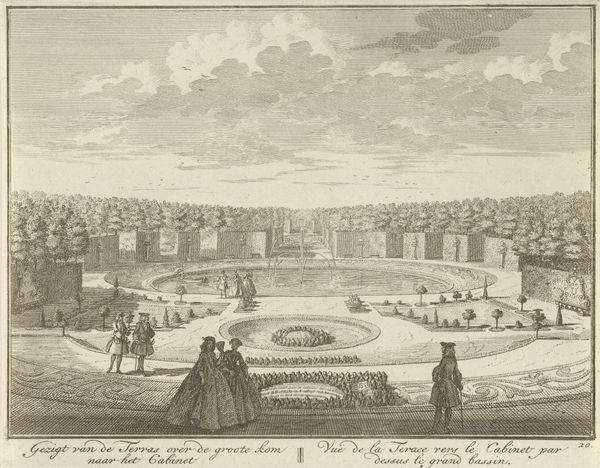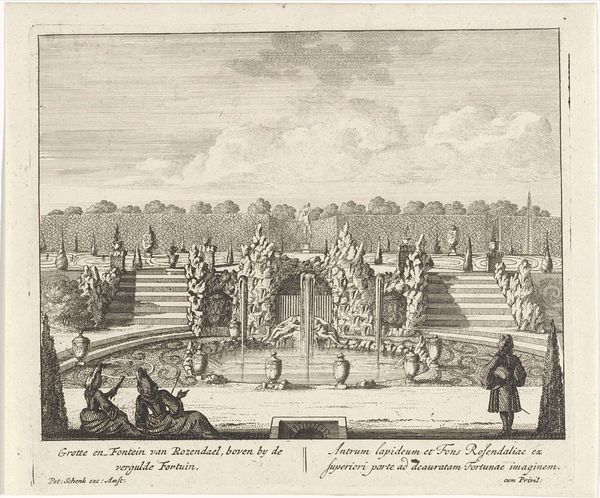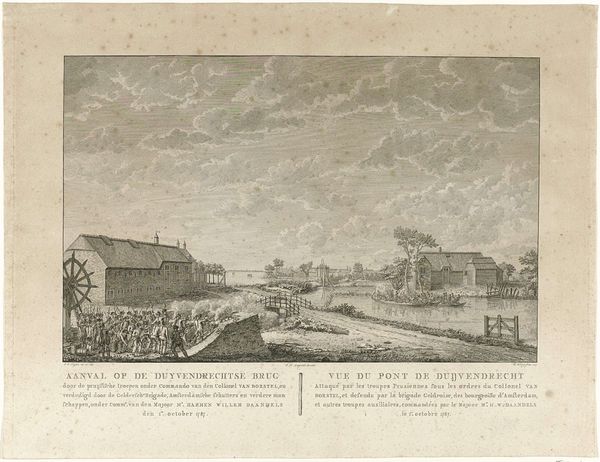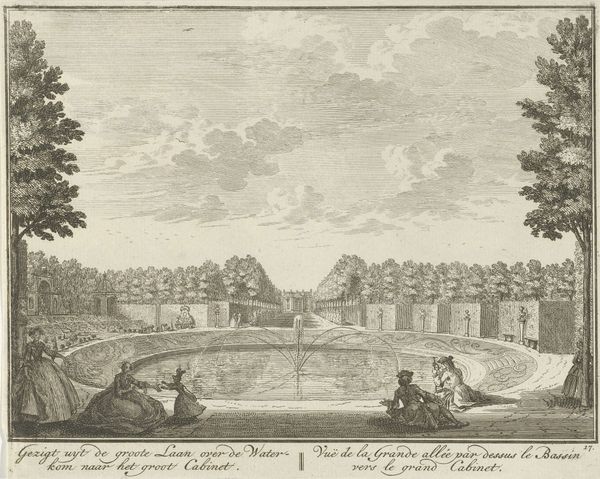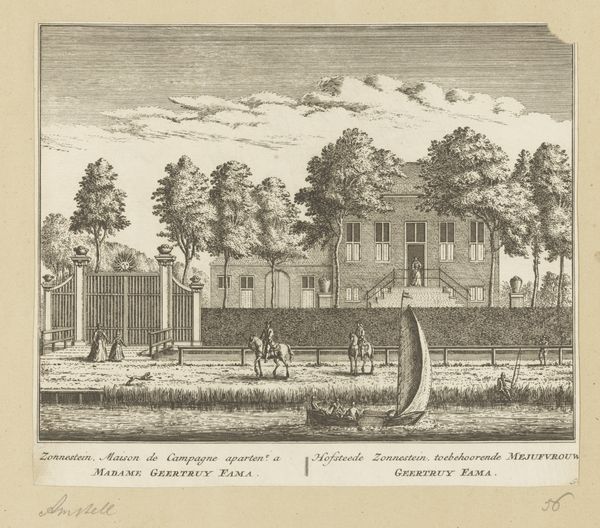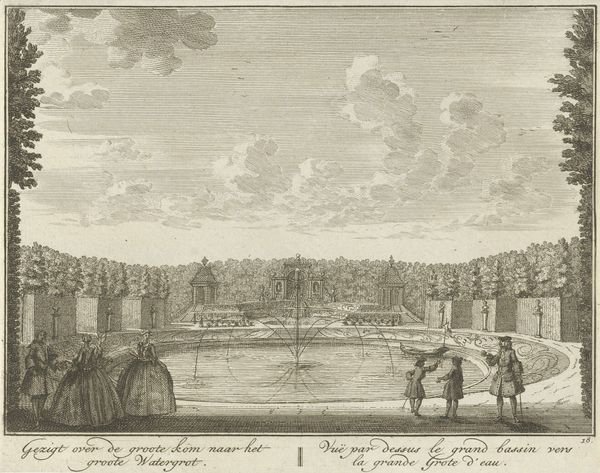
engraving
#
baroque
#
landscape
#
cityscape
#
engraving
Dimensions: height 168 mm, width 205 mm
Copyright: Rijks Museum: Open Domain
Curator: This engraving, dating from about 1740, offers a peek into the luxurious world of the Dutch elite during the Baroque era. It is entitled "Vijver in de tuin van Huis ter Meer te Maarssen", by Hendrik de Leth, and it currently resides in the Rijksmuseum. Editor: My first impression is one of meticulous order, almost theatrical in its precision. Look at the symmetry—the reflecting pool, the placement of the trees, the perfectly positioned figures. Curator: Precisely. This wasn't just a garden; it was a stage for demonstrating wealth, taste, and power. Maarssen, where the Huis ter Meer was located, was a popular summer retreat for Amsterdam's wealthy merchants and regents. Places such as this became settings where they displayed their cultural sophistication through garden design inspired by the French Baroque style. Editor: The cascading water feature, the kaskade in the title, functions almost like a proscenium arch, doesn't it? Leading your eye toward the more naturalistic river landscape beyond. It cleverly merges constructed nature with actual nature. And note how light is employed, contrasting bright and dark surfaces to direct attention to details. Curator: I would agree, although light may also speak to the period's complex relationship between humans and nature; there is this clear attempt to master nature, evident from how they designed garden spaces. Also, gardens allowed aristocrats to manage the production of their identities in a way accessible and pleasing to others. Editor: It’s also worth considering how de Leth translates the visual depth using linear perspective, the details becoming more attenuated toward the horizon. This heightens the sense of vastness, making the estate seem even grander than it might actually have been. And, what appear to be swan details introduce an aristocratic aesthetic. Curator: Indeed. De Leth, while perhaps not an artist in the contemporary sense of the word, played a crucial role in disseminating the ideals and aspirations of the Dutch elite. Prints like these circulated widely, showcasing the lifestyle and values of a specific class. They weren't just depicting gardens; they were selling a social fantasy. Editor: I can appreciate how the form itself, with its careful arrangements and technical skill, embodies a set of specific aspirations of its time. Thank you for illuminating its greater context for me. Curator: My pleasure. It is important for all of us to be more aware of the powerful ways that even gardens reflect—and reinforce—historical values and class hierarchies.
Comments
No comments
Be the first to comment and join the conversation on the ultimate creative platform.
